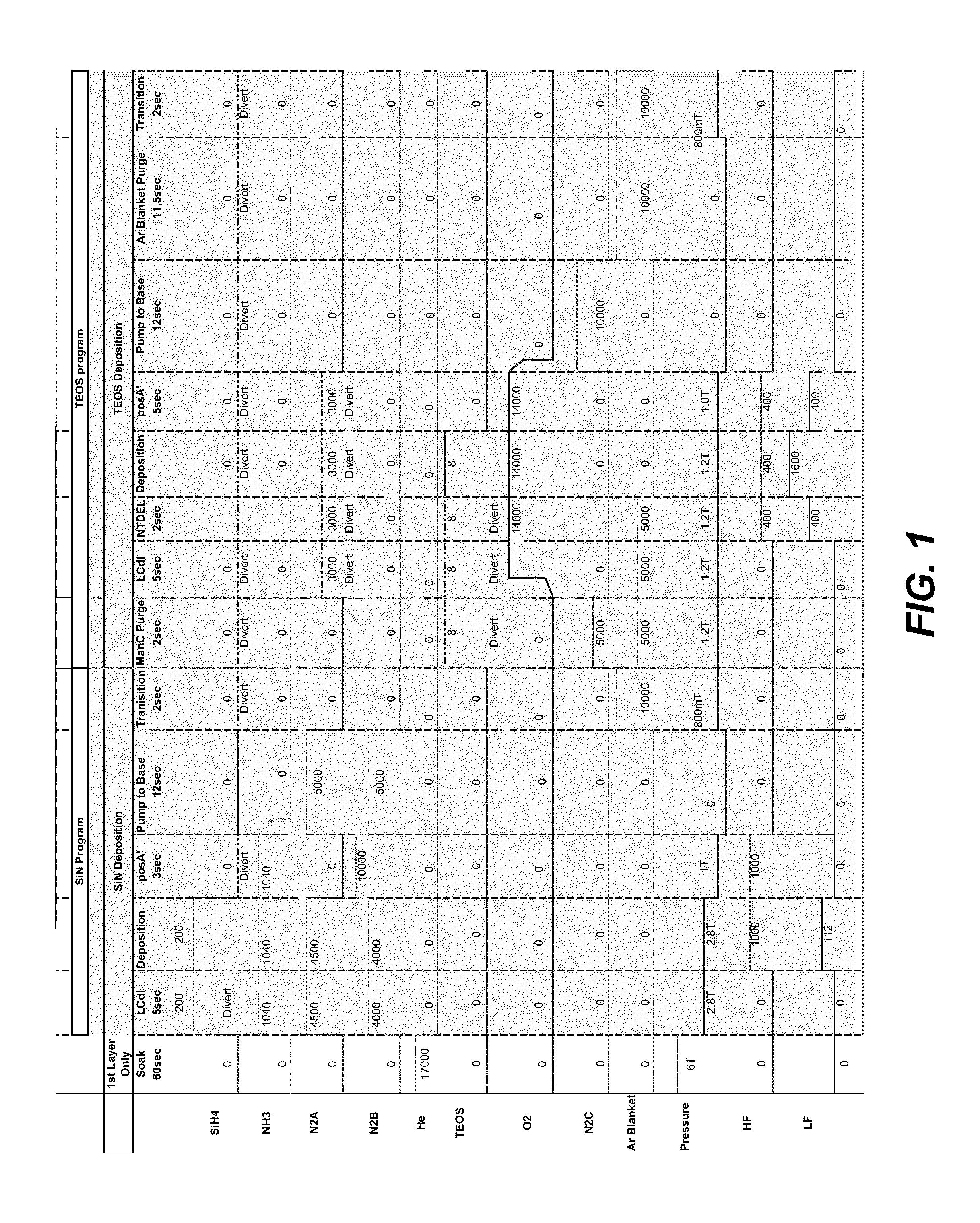In-situ deposition of film stacks
a technology of film stacks and film layers, applied in the direction of chemical vapor deposition coatings, coatings, plasma techniques, etc., can solve the problems of contaminating other process tools, contaminating devices, and device failures
- Summary
- Abstract
- Description
- Claims
- Application Information
AI Technical Summary
Benefits of technology
Problems solved by technology
Method used
Image
Examples
example
[0063]To compare the continuous plasma on (CPO) process with the reference pump-to-base (PTB) process, film stacks having alternating layers of silicon nitride and silicon oxide (SiN / SiOx stacks) were formed using both the reference PTB process of FIG. 1 and the CPO process of FIG. 2. The SiN / SiOx stacks were formed on 14 pairs of wafers for each process so that average stack defect count and total processing time could be compared. It is estimated that the stacks comprised 300 Å of silicon oxide (formed from TEOS precursor) and 500 Å of silicon nitride, except that: the 1st pair of wafers is estimated to have comprised 1300 Å of SiOx, the 2nd to have comprised 1000 Å of SiOx, the 12th to have comprised 1300 Å of SiOx, and the 14th pair of wafers to have comprised 2300 Å of SiOx.
[0064]The wafers were processed in batches, the stack defects in each batch counted, the total batch cycle times accumulated, and the results are listed in TABLE 1 below. Note that a stack defect is essentia...
PUM
| Property | Measurement | Unit |
|---|---|---|
| pressure | aaaaa | aaaaa |
| frequencies | aaaaa | aaaaa |
| frequencies | aaaaa | aaaaa |
Abstract
Description
Claims
Application Information
 Login to View More
Login to View More - R&D
- Intellectual Property
- Life Sciences
- Materials
- Tech Scout
- Unparalleled Data Quality
- Higher Quality Content
- 60% Fewer Hallucinations
Browse by: Latest US Patents, China's latest patents, Technical Efficacy Thesaurus, Application Domain, Technology Topic, Popular Technical Reports.
© 2025 PatSnap. All rights reserved.Legal|Privacy policy|Modern Slavery Act Transparency Statement|Sitemap|About US| Contact US: help@patsnap.com



